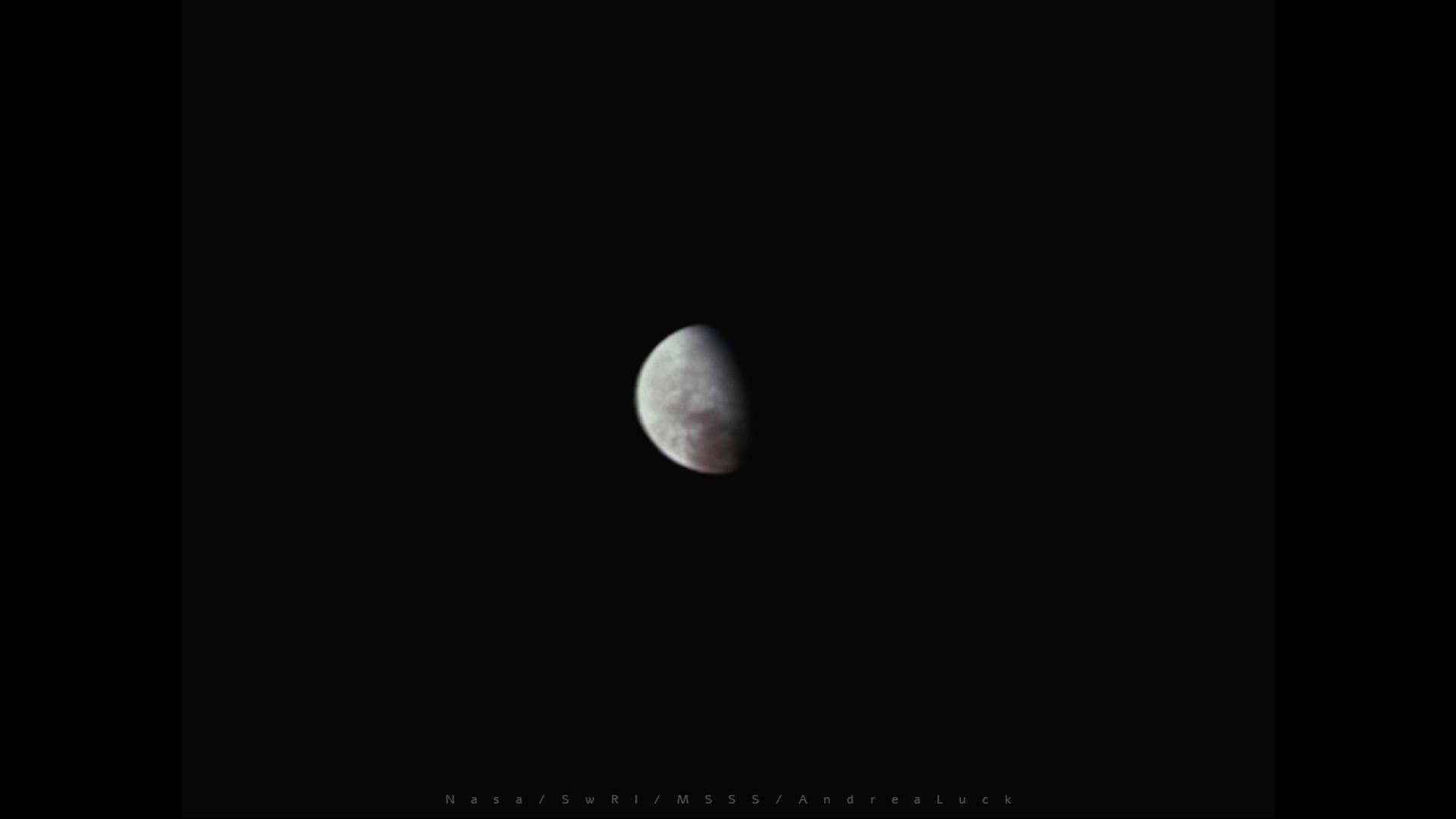Juno flies past Jupiter's icy moon Europa in 1st spacecraft visit since 2000
Juno will look for ice tectonics, plumes and much more.

PARIS — NASA's Juno probe is all set for a close flyby of Jupiter's icy moon Europa on Thursday (Sept. 29), which could possibly reveal tremendous new insights into Europa's crust and interior.
Juno will take detailed images and other data as it comes as close as 220 miles (355 kilometers) to the surface of Europa, which is criss-crossed with cracks along its icy exterior. The visit follows a 2000 flyby by the Galileo spacecraft, and scientists hope that comparing the images taken by the two probes could be very insightful.
"We know that Europa is a dynamic geological body," Michel Blanc, a co-investigator on the Juno mission, told Space.com at the International Astronautical Congress in Paris. "There is a sort of ice plate tectonics at the surface. One thing that will be really interesting to see is if the ice blocks have moved between the two flybys. That would already be a fantastic result because it would show that really the ice sheet is dynamic and moving."
Europa is about 1,940 miles (3,100 km) wide, about 90% the size of Earth's moon. Beneath its icy exterior, scientists think Europa harbors a global ocean, kept liquid by the forces exerted on it by Jupiter and the other large Galilean moons nearby, Ganymede and Io.
Another fascinating possibility would be finding evidence of water plumes erupting from the cracks on Europa's surface. But Juno would need to get lucky to be passing by at just the right time.
Plumes have been "detected a few times in history," Blanc said, including by the Hubble Space Telescope. Scientists have also reanalyzed data from the Galileo mission and this time detected the plumes. Saturn's ice-covered moon Enceladus famously has much more frequent, prominent plumes of water from its south pole.
Breaking space news, the latest updates on rocket launches, skywatching events and more!
Juno is primarily designed to study the interior of Jupiter, but the spacecraft's full suite of instruments and sensors will be online to gather as much information about Europa as possible. And the flyby could lead to new insights into the unseen depths of Europa. Europa's global ocean means the moon is considered a prime candidate for searching for extraterrestrial life in the solar system.
"What will be really interesting for deepening our knowledge is the determination of any signal that is related to determining the characteristics of the ocean," Blanc said.
Juno's magnetometer and radio wave experiment will probe Europa's internal structure via the moon's gravity fields. "So even with one pass, by combining magnetic and gravimetric data, you can improve concepts on determining characteristics of an ocean, especially with a close, 300-kilometer [190 miles] altitude pass," he added.
Juno will also measure plasma in the moon's wake as Juno explores Europa's interaction with Jupiter's magnetosphere, and the spacecraft will look for ultraviolet emissions from Europa's tenuous atmosphere when flying over its night side.
The flyby is part of extended mission objectives approved in 2021. Juno launched in 2011 and arrived at Jupiter in 2016. Juno is in a highly elliptical orbit around Jupiter's poles, making a close approach and then heading far away from the giant planet, with each orbit early on in the mission taking around 53 days.
But Jupiter's strong gravitational field is pulling Juno closer in toward the planet on every orbit. This means today's flyby will be Juno's only chance to get close to Europa before the spacecraft's orbital period will drop from 43 to 38 days.
Juno will, however, get two opportunities to make flybys of the volcanically active moon Io — in December 2023 and January 2024 — as the spacecraft gradually moves closer in. The spacecraft also made a flyby of the massive moon Ganymede in March 2021, revealing auroras and huge unknown craters.
Data from Juno's Europa flyby will also be highly valuable for another, upcoming mission. NASA's Europa Clipper mission is due to launch in 2024 and arrive at the Jupiter system in 2030 to study the moon in detail.
Follow us on Twitter @Spacedotcom and on Facebook.

Andrew is a freelance space journalist with a focus on reporting on China's rapidly growing space sector. He began writing for Space.com in 2019 and writes for SpaceNews, IEEE Spectrum, National Geographic, Sky & Telescope, New Scientist and others. Andrew first caught the space bug when, as a youngster, he saw Voyager images of other worlds in our solar system for the first time. Away from space, Andrew enjoys trail running in the forests of Finland. You can follow him on Twitter @AJ_FI.
